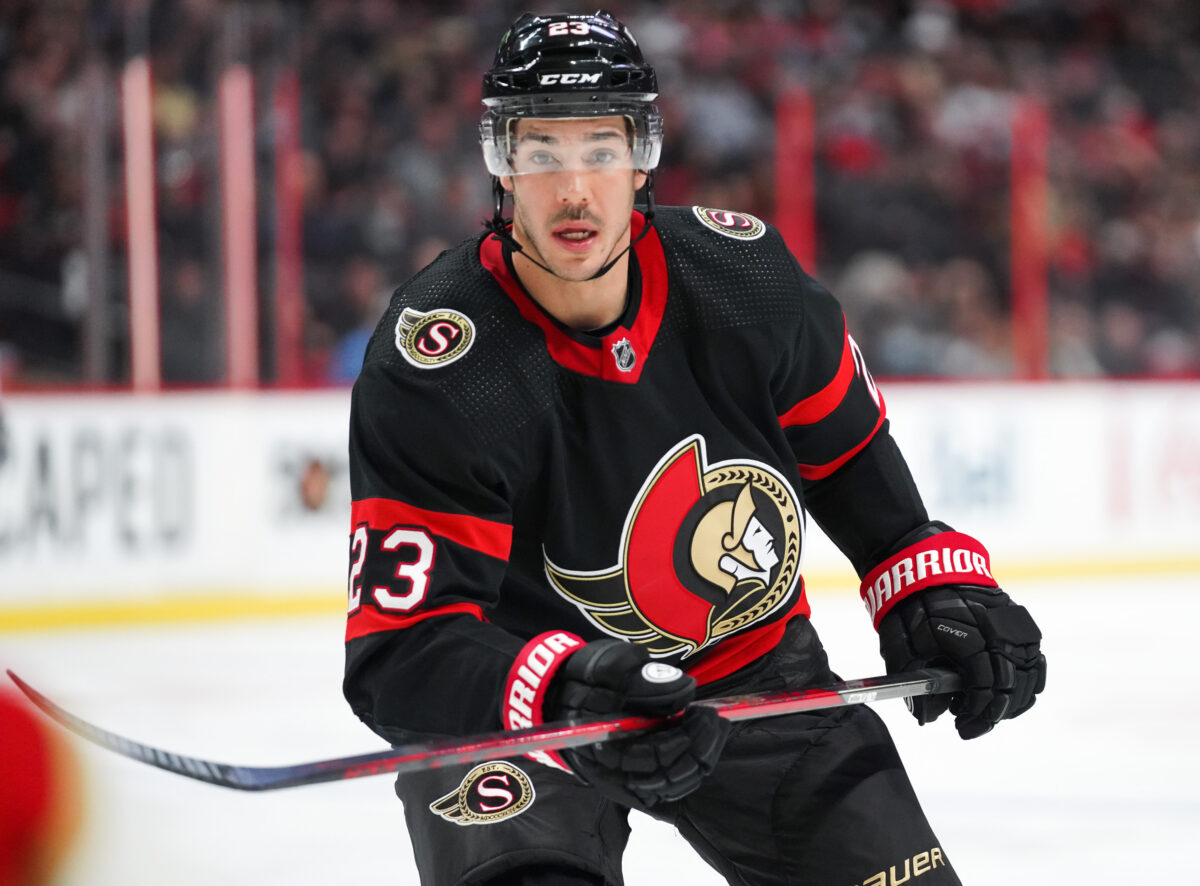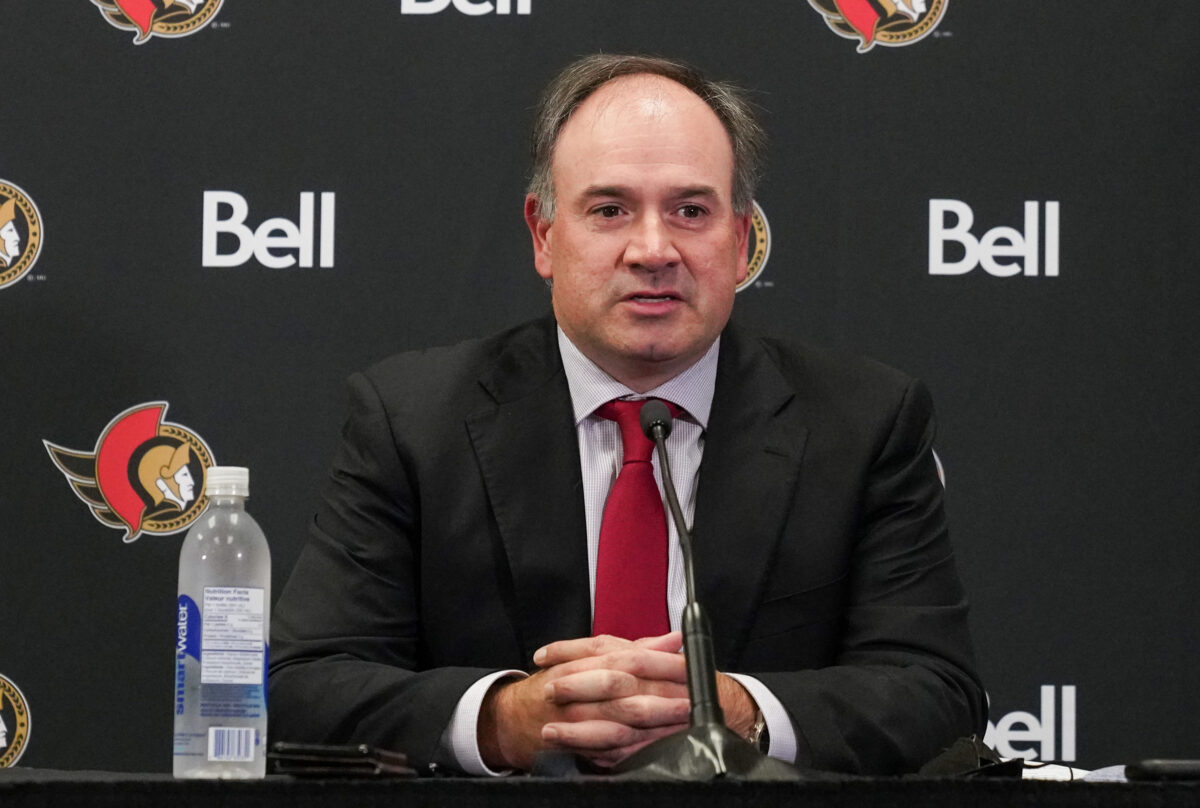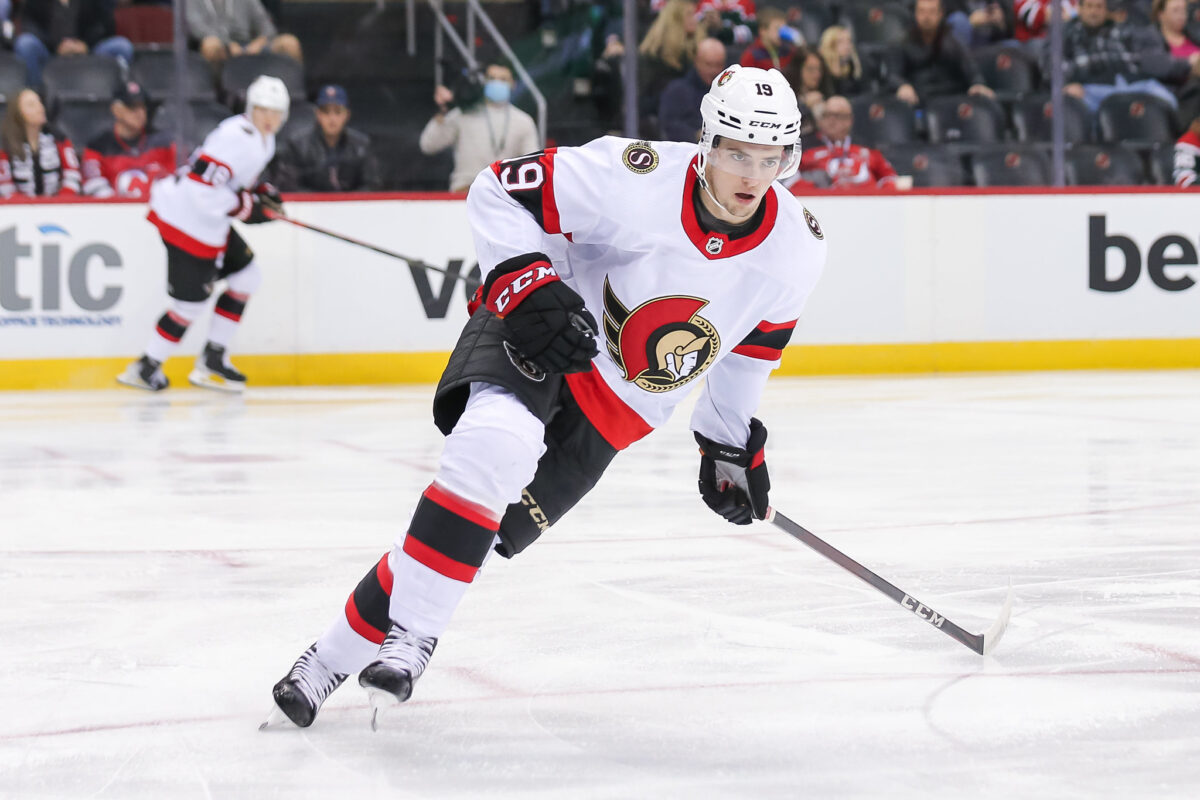The 2024-25 Ottawa Senators are arguably the best team fans have seen in years. Tim Stutzle leads the team in scoring and is on pace to hit 100 points, which could make him the first player to hit that mark since 2006-07. Brady Tkachuk isn’t far behind his German teammate, and with nine goals already, he could become the first 40-goal scorer since 2007-08. Add in Drake Batherson, Josh Norris, and surprisingly Adam Gaudette, and the Senators could potentially have five 30-goal scorers, which has never happened in franchise history; the most Ottawa has had in one season is three.
So why are the Senators still losing?
In November, Ottawa has gone 3-7-1, including a four-game losing streak and a demoralizing loss to the Edmonton Oilers, in which the players and coach looked disinterested. After the Senators lost to the Vegas Golden Knights, head coach Travis Green said, “I think that there’s a little bit of carryover from years past and here we go again around here, and I think you can only worry about the present, not worry about the past. Control what’s ahead of you, not, you can’t control what’s behind you.”
The only problem is that the Senators’ problems may lie behind them, and if the team ever wants to become a playoff competitor, they’re going to have to address the issues that put them here in the first place.
It Starts with Travis Hamonic
There’s no question that Travis Hamonic has been the Senators’ worst defenceman this season. In 19 games, the veteran defender has just one assist, a minus-8 tied for the second-lowest on the team, the only negative Corsi For Percentage defender in Ottawa, and has been a big reason why the Senators have a weak penalty kill. He does bring valuable leadership and experience to a young dressing room and blocks a fair number of shots, but everything else has been subpar. Anywhere else, he would have been relegated to the press box or even sent down to the minors. So why hasn’t Ottawa done that yet?

The problem is that his contract has a full no-movement clause (NMC), preventing Hamonic from being traded or sent down to the minors. While most teams have at least one or two, what makes this one strange is that his cap hit is only $1.1 million. Only three other players with an NMC have a cap hit under $3 million, and no one else makes less than $2 million. Since NMCs have been used to keep a player’s contract demands lower, they rarely show up on cheap contracts like Hamonic’s. Except when he signed the deal in 2023, the Senators were pressed up against the cap ceiling and needed to find ways to save as much money as possible just to ice a full roster. With a decent 2022-23 season in Ottawa, it made sense to at least explore re-signing him and offering an NMC to help fit his cap hit on the roster.
But, as Shaan Malik of Silver Seven Sens wrote regarding Hamonic’s NMC, “The reason most GMs don’t need to do this often is because they’re smart enough to allocate their cap space to include an extra forward and an extra defenseman at least.” The problem wasn’t that Hamonic was given an NMC, although that wasn’t a good move. The primary issue was that years of cap mismanagement put the Senators into an impossible situation just as they were starting to look ready to compete for a playoff spot. They needed a veteran player and had no money to spend on him without making concessions. So, that begs the question – where did all the money go?
Dead Cap and Bad Contracts
While much can be said for Pierre Dorion’s eye for talent, there’s no question that the former Senators general manager wasn’t great with money. The most well-known example is the situation with Colin White. Once the team’s top forward prospect, he was signed to a big $4.75 million extension after his promising rookie career. However, he completely collapsed over the following seasons, forcing the Senators to buy him out three years into a six-year deal, leaving the team on the hook for $875,000 until 2027-28. But that’s just the tip of the iceberg regarding how he managed the Senators’ salary cap.
From the day he became GM in 2016 to when he was fired in 2023, Dorion managed to retain a total of nearly $48.5 million including buyouts, according to Spotrac.com. That’s an average of nearly $7 million per season of unusable money, and while it wasn’t all spread out evenly over his seven years in the Senators’ front office, Ottawa was paying the equivalent of a bottom-six player in dead cap every season except in his first year as GM. Yet the worst part is that 72% of the contracts either retained or bought out during his tenure were signed directly by him.

Let’s take a look at some examples. When Matt Murray was acquired for a second-round pick and a prospect, most fans were excited that a starting goalie cost so little. However, Dorion immediately signed him to a four-year, $25 million deal. The cap hit was $6.25 million, already an overpayment for the struggling goalie, but the salary breakdown saw Murray get $15 million over the last two seasons. So, not only did the contract get tougher to deal with the longer he remained in Ottawa, but if he were to find success with the Senators, the team would be on the hook for a much steeper qualifying offer, making it much harder to keep him around with the team’s core in place. Then, when Murray was traded to the Toronto Maple Leafs, the Senators retained 25% of his salary (roughly $1.5 million) and sent two draft picks with him for future considerations.
On a smaller scale, the Senators acquired Alexandre Burrows at the 2017 Deadline for a mid-level prospect, Jonathan Dahlen. At the time, Burrows was making $4.5 million with the Vancouver Canucks, but had just one year left on his deal. He did well enough after arriving in Ottawa, scoring 11 points in 20 games but wasn’t much of an impact during the playoffs. Still, the Senators re-signed him to a two-year, $2.5 million deal the following summer. He lasted 71 games before he was sent to waivers to be bought out, leaving the Senators on the hook for another $2.5 million in 2018-19.
Related: Senators’ Goaltending Still a Concern Despite Changes for 2024-25
Both of those contracts were incredibly short-sighted. Murray was aging and struggling with injuries but was suddenly one of the highest-paid goalies in the NHL. Burrows was also not the same player he was, and even though Ottawa saved money on his previous contract, he was far from worth the confounding deal he was offered. In fact, ‘short-sighted’ is a good way to sum up Dorion’s time in Ottawa. Nearly every contract that didn’t deal with the Senators’ current core had little planning behind it and sacrificed future complications for immediate relief, leaving Ottawa with massive gaps in their lineup but no money to fill them.
Senators Have a Mushy Middle
Dorion’s issues with money management are nothing new, and nearly all of the problematic contracts have been moved out since Staios took over. White’s buyout is still on the books, but it’s gone down to just $625,000 this season, and the only other chunk of dead cap is Joonas Korpisalo’s, which is just $1 million for the next three seasons. The Senators are in a much better financial situation than they have been in years. However, the problem of constantly signing and flipping contracts is that it created a mushy middle of the lineup; that is to say, a rotating group of middle-six players that make more than $1 million and less than the team’s core that have been treated as stop-gaps until someone else can take their place.
Just look at the Senators’ current middle: despite paying over $21 million on five players, the Senators have only got back 16 goals, half of which have come from Batherson. David Perron has been injured most of the season, but invisible when he’s been in the lineup, Claude Giroux and Shane Pinto have both taken a step back, and Michael Amadio hasn’t been the same player he was with Vegas last season. Compare that to a similarly-built team like the Florida Panthers, who are paying less than $20 million for five middle-of-the-lineup players, yet have 27 goals so far this season.

But, when players are constantly moved in and out, there’s little opportunity to develop chemistry with each other or build into a team’s culture. Except, when Dorion grabbed the reins in 2016, there was a mentality throughout the league that Ottawa wasn’t a fun place to play, which made signing free agents difficult. To fix this, he offered big money to players like Yevgeni Dadonov, Michael Del Zotto, and Vladimir Tarasenko, who were at one time fairly big names, then swung for the fences with trades for Jakob Chychrun and Alex DeBrincat. Acquiring some of the most sought-after players of the time would surely lead to a winning team and convince others that Ottawa was a good place to play.
Unfortunately, it has had the opposite effect. Del Zotto was incredibly blunt with his criticism of the Senators’ organization under Dorion, while Chychrun and DeBrincat never fit in with the team’s core and all but refused to sign long-term, leading to lopsided trades. These aren’t isolated incidents, either; respected veterans Derek Stepan, Erik Gudbranson, and Ron Hainsey struggled to adapt to Dorion’s team, and up-and-comers like Mark Stone, Mika Zibanejad, and Anthony Duclair were moved before they could contribute to building a winning team together. While that’s the risk of a rebuild, the Senators failed to acquire any valuable pieces in any of those moves, perpetuating the image of Ottawa as an undesirable location for NHL players.
Developing a Losing Culture
While Staios and owner Michael Andlauer have done plenty of work to turn the Senators into a more respectable franchise, the team needs a lot of unlearning to get over the years of losing. Back in 2019, Silver Seven Sens’ Brandon Maki wrote about the frustration he felt following this team, about how every strong leader and promising face of the franchise was moved for more future pieces. The rebuild kept getting pushed down the road and players had to get comfortable with losing. Now that they have a competitive roster, that mentality has lingered.
Following the Senators’ recent loss to the Vancouver Canucks, Norris was asked whether this group was fragile. Of course, he refuted the claim, but added, “It’s about us internally, and we’re figuring it out day by day. We have a lot of work to do. Make no mistake. It’s frustrating to find consistency. That’s the hardest thing to do in sports, and we don’t have it right now. We’ve got to find it.”
It’s possible it could have been fixed with the hiring of a coach like Patrick Roy, who Dorion mentioned was in the running to take over from Guy Boucher and Marc Crawford before the team went with D.J. Smith, who was a much more personable coach. While Roy’s coaching record and tactics are up for debate, there’s no question he’s a no-nonsense leader who ensures that poor choices have consequences, much like it did when Jacques Martin was behind the bench in the mid-2000s. Old habits die hard, as they say, and for many of the players, all they’ve ever known is how to push success to next year.
So, when Green says that the team needs to focus on what’s ahead and not get distracted by the past, he’s ignoring what put the team here in the first place. Dorion’s inability to manage the cap created the need to stretch a rebuild longer than necessary, forcing the team to trade away talented players and sign unfavourable deals just to ice a competitive roster, which led to buyouts, retained salary, and more bad deals. The Senators are in the right place to fix the years of issues, but some difficult decisions will have to happen before any meaningful change can occur.
